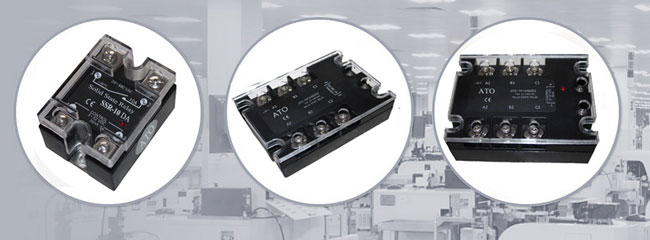Difference Between Solid State Relay and Ordinary Relay
Solid State Relay
A solid state relay is an all-electronic circuit combination component that relies on the electromagnetic and optical properties of semiconductor devices and electronic components to complete its isolation and relay switching functions. Compared with the traditional electromagnetic relay, the solid state relay is a relay without machinery and no moving parts, but has essentially the same function as the electromagnetic relay.
Solid state relays are widely used in industrial automation control, such as electric furnace heating systems, cooked control machinery, remote control machinery, motors, solenoid valves and signal lights, flashers, stage lighting control systems, medical equipment, copiers, washing machines, fire security systems, etc. Lots of applications. Reliable work, no contact, no sparks, long life, no noise, no electromagnetic interference, fast switching speed, and the purpose of directly driving large current loads with tiny control signals.

Solid State Relay Advantages
- High life and high reliability. Solid state relays have no mechanical parts, and solid state devices complete the contact function. Because there are no moving parts, they can work in high shock and vibration environments. Due to the inherent characteristics of the components that make up the solid state relay, the solid state relay has a long life and high reliability.
- High sensitivity, low control power and good electromagnetic compatibility. Solid state relays have a wide input voltage range and low driving power, and are compatible with most logic integrated circuits without buffers or drivers.
- Fast switching. Because solid state relays use solid state devices, the switching speed can be from a few milliseconds to a few microseconds.
- Small electromagnetic interference. The solid state relay has no input "coil", no arcing and rebounding, thus reducing electromagnetic interference. Most AC output solid state relays are a zero voltage switch that conducts at zero voltage and turns off at zero current, reducing abrupt interruptions in the current waveform and thus reducing switching transient effects.
Ordinary Relay
It is generally composed of relay coils and static and dynamic contacts. The movable contact acts through the electromagnetic attraction of the relay coil, thereby realizing the connection and disconnection of the circuit. So there is mechanical movement. When the current reaches a certain level, the contacts will spark. The spark and mechanical movement during the action will have a certain impact on its life. The advantages of traditional relays are simple drive, good isolation, and good short-term overload tolerance. The disadvantages of traditional relays are large size, slow response speed, and large power consumption of driving relays.
Solid State Relay vs. Ordinary Relay
- Structure. Ordinary relays work by using the suction effect generated by the circuit in the input circuit between the ordinary iron core and the armature; solid state relays use electronic components to perform their functions without mechanical moving components, and the input and output are isolated.
- Working mode. Ordinary relays use the principle of ordinary induction to control the on-off of the circuit through the power of ordinary iron. Therefore, when the coil is connected with direct current, the contacts can communicate with alternating current and direct current; solid-state relays rely on the electricity, Magnetic and optical characteristics are used to complete its isolation and relay switching functions. Therefore, it is divided into DC input-AC output type, DC input-tributary output type, AC input-AC output type, and AC input-DC output type.
- Working state. Ordinary relays use the suction effect generated between the armatures to switch on and off the circuit. Therefore, the action response is slow, there is noise, and the life is limited; the solid state relay responds quickly, operates without noise, and has a long life.
- The use environment. In the influence of factors such as temperature, humidity, atmospheric pressure, sand pollution, chemical gas and ordinary interference, ordinary relays are generally inferior to solid state relays.

